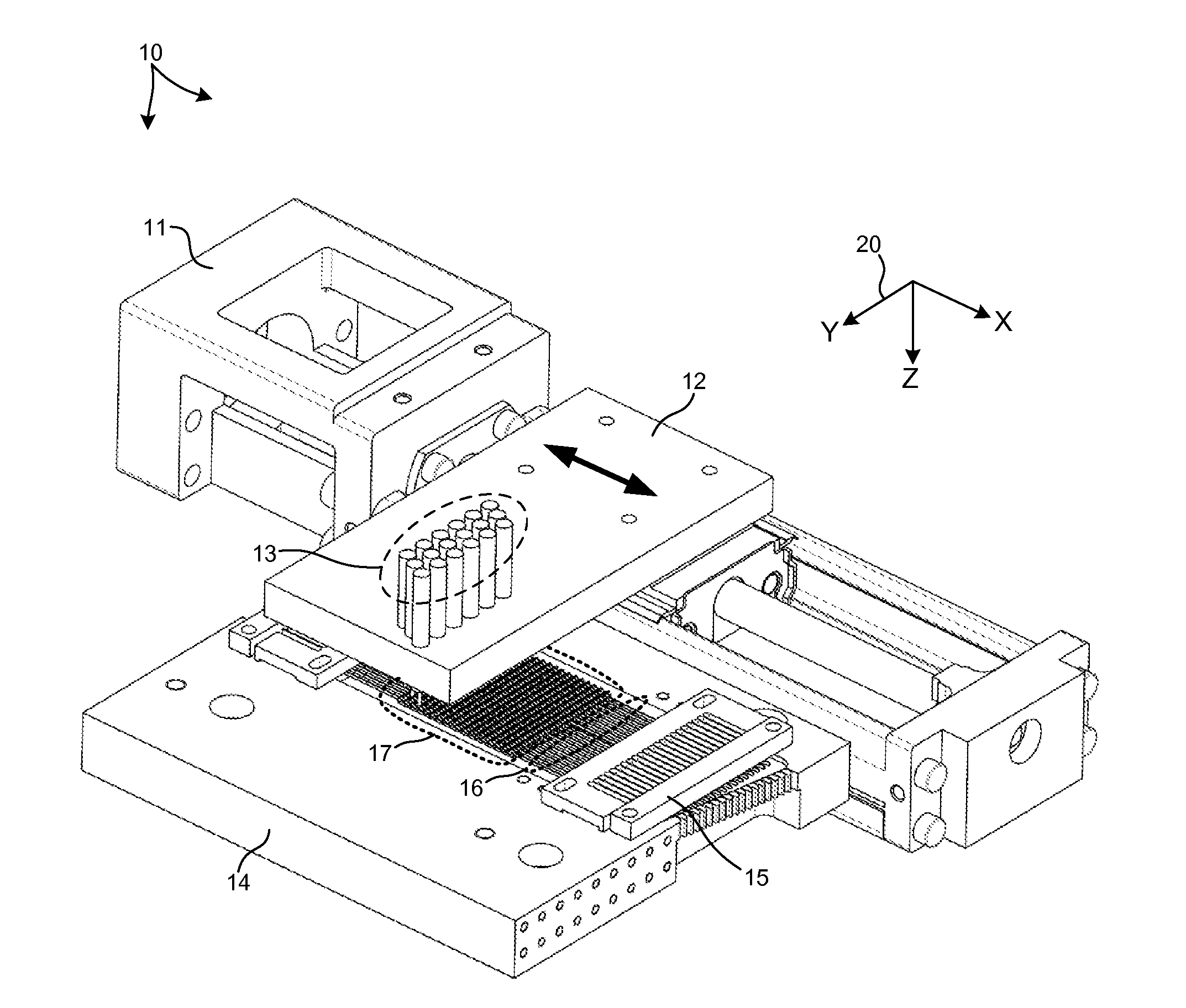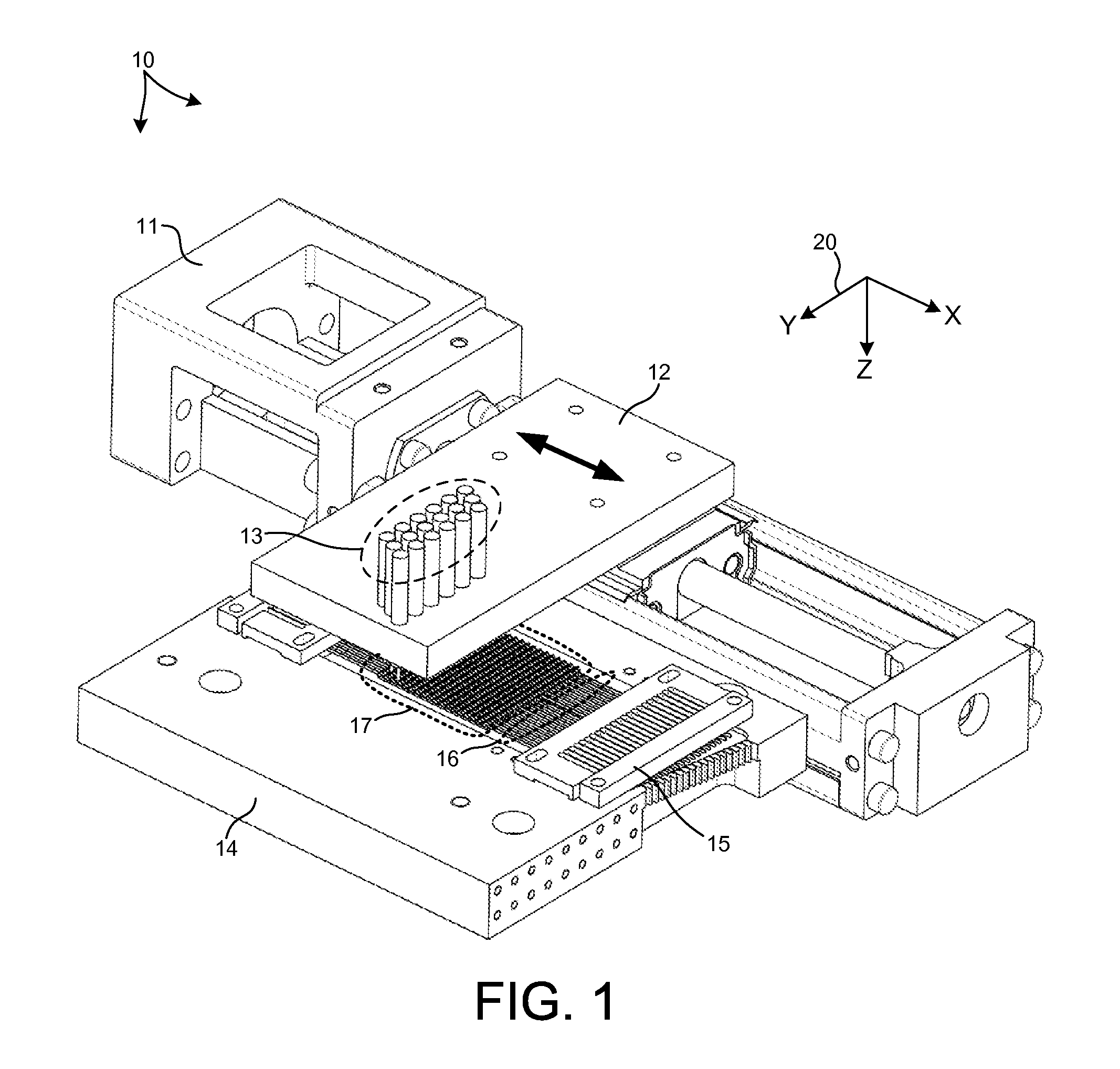2d programmable aperture mechanism
a technology of aperture mechanism and programmable aperture, which is applied in the field of optical inspection systems and methods, can solve the problems of limited number of aperture shapes and sizes, and limited number of shapes that can be presented by the tape drive mechanism, so as to reduce the amount of heat accumulated by the mechanical pixel element, reduce the number of mechanical pixel elements, and avoid excessive heat accumulation in each mechanical pixel
- Summary
- Abstract
- Description
- Claims
- Application Information
AI Technical Summary
Benefits of technology
Problems solved by technology
Method used
Image
Examples
Embodiment Construction
[0031]Reference will now be made in detail to background examples and some embodiments of the invention, examples of which are illustrated in the accompanying drawings.
[0032]Methods and systems for reconfiguring an aperture of an optical inspection system are presented. Such systems are employed to measure structural and material characteristics (e.g., material composition, dimensional characteristics of structures and films, etc.) associated with different semiconductor fabrication processes.
[0033]An aperture mechanism programmable in two dimensions is introduced to increase the range of measurement applications accommodated by the measurement system with increased sensitivity, while maintaining adequate throughput necessary for modern semiconductor manufacture.
[0034]FIG. 1 illustrates a programmable aperture system 10 in one embodiment. The programmable aperture system 10 includes a two dimensional array of mechanical pixels 17 that selectively block light passing through the aper...
PUM
| Property | Measurement | Unit |
|---|---|---|
| diameter | aaaaa | aaaaa |
| wavelength range | aaaaa | aaaaa |
| wavelength range | aaaaa | aaaaa |
Abstract
Description
Claims
Application Information
 Login to View More
Login to View More - R&D
- Intellectual Property
- Life Sciences
- Materials
- Tech Scout
- Unparalleled Data Quality
- Higher Quality Content
- 60% Fewer Hallucinations
Browse by: Latest US Patents, China's latest patents, Technical Efficacy Thesaurus, Application Domain, Technology Topic, Popular Technical Reports.
© 2025 PatSnap. All rights reserved.Legal|Privacy policy|Modern Slavery Act Transparency Statement|Sitemap|About US| Contact US: help@patsnap.com



